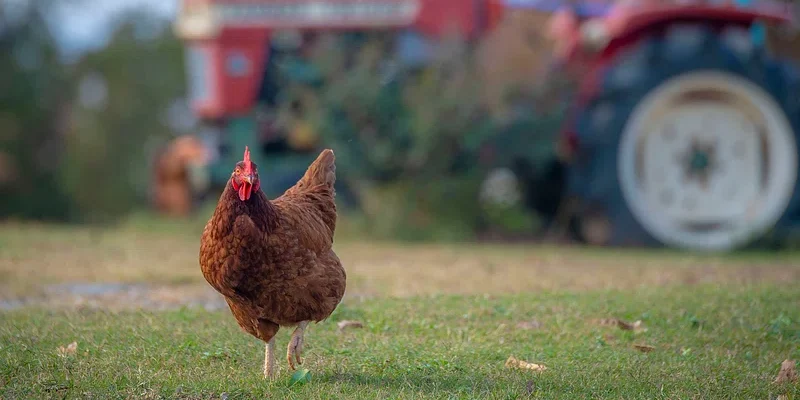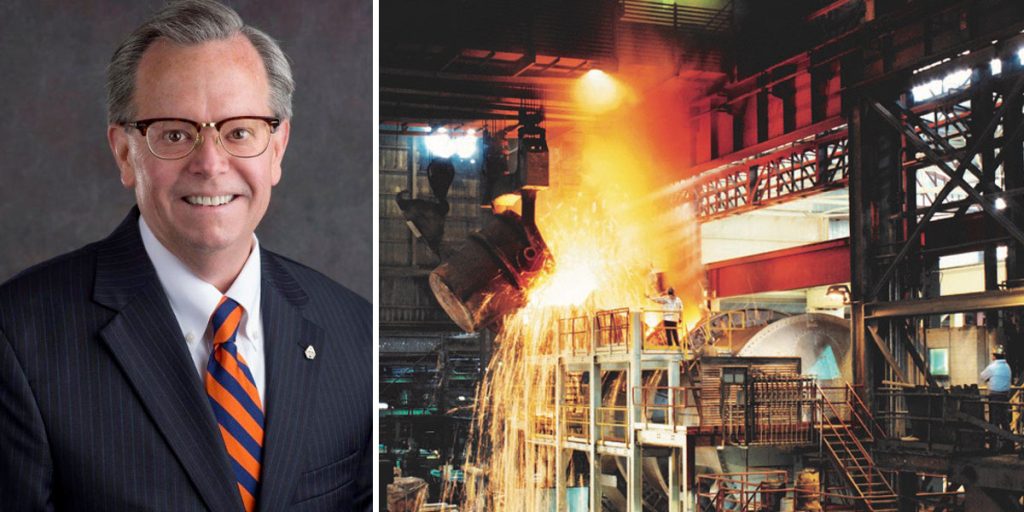Beef has been on the dinner table throughout our history in modern society. When humankind transitioned from being hunters and gathers to farmers and ranchers, efficiency of our food supply chain increased. The efficiency of producing food has continued to increase throughout our recent past generations. Statistics show that in the 1930s one farmer fed four other people. In the 1970s the statistic was 73 people; and today, one farmer feeds approximately 170 people. The data indicates that one farmer has increased the number of people fed by two individuals each year since the Great Depression.
Prior to 1950, the increase was only one person per year; but, during the latter half of the 20th century the annual increase in the number of people a farmer fed was 2.4 people. This rapid shift in the increase of efficiency of the American farmer and rancher is directly related to the development and implementation of technology in modern-day agriculture. This is especially true for beef production systems. Today, the innovative development of genetics, management, nutrition and reproduction technologies into cow herds results in 36% fewer cattle needed to produce the same amount of beef that was produced in 1975. Implementation of these technologies developed by scientists at land grant universities, USDA and private industry has been the foundation of the increased efficiency in beef production.
Unfortunately, the rate of growth in the number of people fed by the American farmer and rancher is decreasing. Within the last decade, the rate of growth in the efficiency of one farmer or rancher feeding others declined from 2.4 to 1.4 persons per year. We believe a reason for the recent loss of efficiency growth is in part related to the many areas of activism negatively affecting the development and implementation of technology in farming and ranching. Activists, under the banner of animal care and well-being, environmental sustainability, greenhouse gas production, animal harvest for food, deforestation and many other areas, negatively affect food production. At a time in our history when agricultural lands are being consumed by urban sprawl amidst a rapidly growing world population, the need for increasing the number of people a single farmer or rancher can feed is increasingly important. Increasing the efficiency and quantity of food production is imperative to provide food security in future generations.
As farming and ranching developed, beef (and other farm-raised animal protein) became a staple on the plate. Beef has been in the human diet worldwide for generations. Beef provides needed high-quality protein supplying dietary essential amino acids, vitamins and minerals for a healthy lifestyle. It fits well in a balanced diet for growth, health, reproduction and maintenance of the human population. However, beef is being threatened by activists from many different angles. There has been a growing campaign to take beef (and meat in general) off the table. In the past, animal protein production faced animal care and well-being, animal harvest for food, greenhouse gas production and other issues brought forth by animal activists.
Recently, it has faced the challenges of fake meat, lab-grown meat and alternative protein as a replacement for beef (and meat) to maintain its place on the table. Activists are working hard to take the farm animal out of the food equation. At a time in the world when we must increase the quantity and efficiency of food production to prevent food insecurity, it does not make sense to remove farm animals from the food equation. There is no other replacement for the efficiency of a cow (and her offspring) harvesting her own food by grazing grass and other forages while converting it into high-quality, nutritious and healthy human foods. The lands used for this activity are most often agricultural lands not conducive to producing any other foodstuff.
Additionally, cows and growing cattle, along with pork and poultry, are fed feedstuffs that contain by-products of other industries that are not feasible for human consumption. These include cotton industry by-products, corn distillers’ grains generated by the use of corn grain for alcohol production and corn gluten and corn bran generated from the production of starch and corn oil. Wheat used for the production of flour generates significant amounts of by-products not consumed by humans to include screenings, bran and germ that is targeted for food animal feeds. Corn, wheat and other grains that do not meet the specifications as food grade are destined for animal feeds. Citrus pulp, apple pomace, potato waste and hundreds of other by-products are found in animal feeds—products humans do not eat. Without farm animals producing high-quality protein for a consuming public, all of these by-products would create a significant environmental hazard by their disposal into waste dumps. These stories are overlooked and never presented by the activists working to remove beef (and other meat) from the diet.
If beef continues to be a staple to provide high-quality protein for generations to come, we have to become the activist. Activist is defined as a person who campaigns to bring about political or social change. Those that we think of today as animal activists are those that focus on animal care and well-being, environmental issues, animal harvest for food, health for the consuming public and other issues in order to “save the animal from human consumption.” However, the farmer and rancher is focused on the very same issues except in the direction of using animals to serve humankind by providing a “wholesome, safe, healthy and high-quality protein for human consumption” to feed a hungry world.
Stop and think about what the world looks like tomorrow if the activists working against beef as a safe, healthy, nutritious product for a world population were immediately granted their desires, which would mean “No Beef on the Dinner Table.” Answer these questions: 1) Is this what our society needs? 2) Would the world be healthier? 3) Would our environment be improved? 4) Would animals (beef, pork, poultry) lead long and happy lives without the fear of being eaten (by humans or animals of prey)? The answer to these questions is NO, because 1) Our diet needs to contain high-quality protein that supplies dietary essential amino acids, vitamins and minerals that are readily available from animal products: meat, milk, eggs, 2) lean beef and other animal protein (eggs, milk and milk products) are recognized as major nutrient dense foods needed for a healthy lifestyle, 3) food animals convert feedstuffs and by-products not directly consumed by humans that otherwise would not have a value for feeding humans and 4) if food animals were not used for food, they would not be needed in the animal kingdom and would likely become extinct. Additionally, society would likely face a severe food shortage and economic crisis, the likes of what has never been realized in modern history in this country.
The North American Meat Institute reported in a 2012 Meat and Poultry Economic Impact Study that the combined impact of the meat and poultry processing industry contributed approximately $894 billion in total to the U.S. economy, or just under 6% of total U.S. GDP. Based on a 2014 economic analysis, beef cattle production contributed approximately $165 billion to the U.S. economy through direct and indirect economic employment opportunities. And these statistics have continued to increase to present day. The nation and world cannot afford to remove these products from the marketplace, either economically or nutritionally.
The call by the activist to take beef (and animal protein) off the table must never become a reality. However, if we do not step forward and stand tall to fight the fight it will become a reality within the generation of millennials. If no action is taken, society will have to address many issues that currently do not exist. Some of these are: What happens to the food animals worldwide if they are not used to supply a healthy wholesome protein for humans—their only value will be in zoos? What happens to the welfare of these animals—no one will be able to afford to provide quality care and well-being if they are not productive or valued by society? Without being a valuable food staple on the table, food animals will go the way of feral hogs and unwanted horses to be released into the wild creating significant environmental damage if not controlled. Without cattle, the non-cultivatable land in the world not conducive to growing crops will have no economic value. Many by-products of multiple industries will not be utilized. Rangelands world-wide will not be valued for their contribution to food production. At a time when world food hunger and world-wide food security is “front and center,” does it really make sense to give the activist what they ask for?
Balance is the foundation to success. When the scale gets tipped one way or the other too far in either direction, it requires a readjustment to gain a “new normal.” The activists work to slowly and methodically shift the fulcrum to the left, creating change (and then readjustment of balance) in the direction of their goal. Unfortunately, the work of the activists do not have farmers, ranchers or the consumer’s interest within their heart. They do not seem to see (or even care) where the balance point should be placed. Activists tout healthy food, clean environment and animal care as their concerns. And, consequently, their message gets millions of people joining their cause (and oftentimes unknowingly) targeted toward destroying the food animal industry. Let’s look at this from a different perspective. Is the American farmer and rancher focused on producing a healthy, high-quality product while maintaining our environment for the next generations while simultaneously providing quality animal care and well-being for the animals in their care? The answer is certainly, yes. We know that—but does the world? The public will “stand up” in support of environmental management for future generations, quality animal care and well-being to provide a valued life for animals and the production and delivery of safe and wholesome nutritious food. This is what we do in beef production and all of animal agriculture. If we do not take our message to the consuming public, someone else will. And their agenda is to take meat off the table. Since the Meatless Monday movement began in 2003, it has taken hold in over 40 countries and adapted in over 22 different languages simply because of the presentation that it’s “good for you” and “good for the planet.” We know beef is good for you and good for the planet, but does the public?
In society, each crisis of the day/month/year is overcome in some way or other. The direction of that solution depends upon those providing solutions. The farmer and rancher have always been innovative in sustaining their livelihood through the hard times and good times. Otherwise, the dramatic increases in production efficiency presented at the beginning of this article would not have been a reality. Our forefathers stood tall and fought for a better way. Today we have to do the same. We have to continue to be innovative in the way we do things in developing a safe and wholesome product for our future generations. Farm-level innovation over the past decades includes the incorporation of improved genetics, better management, enhanced efficiency and greater productivity. All of these things have led to an enhanced environment for future generations and the sustainability of our food supply. This is very ironic because the environment and sustainability of beef production is often presented in a negative light by anti-beef activists, and beef production is indeed sustainable while utilizing waste products from other industries. In fact, beef production adds sustainability to other industries. Very few industries can claim such a positive movement in efficiency and sustainability. In order to feed our future generations beef (and other animal protein), we must continue this fight.
Today, individuals, activists and politicians are working against us. We believe balance is a key to our continued success. We need balance across all sources of protein for a well-balanced diet. Looking ahead to meet the global food security challenges, we need to recognize it will take balance between both plant and animal products. It will take innovation and adoption of best practices to ensure all global food security. We must continue our efforts to increase the efficiency of all food production, including animal protein. The future of beef for generations depends upon it.
We are thankful that every day we have our industry checkoff funds providing quality data and information, our national and state cattle organizations providing leadership, scientists providing new technology, media outlets providing quality information and farmers and ranchers working hard to deliver a quality product. But that’s not enough—we have to do more. In order to sustain beef for generations, it will take activism. We must fight activism with activism, just as we fight fire with fire. It’s time we set a backfire along the inner edge of the fire line to consume the fuel in the path of the activists that are so focused on destroying the consumption of animal protein. It is our call to produce a wholesome, healthy, high-quality protein, to provide quality care and well-being for animals in our control and to not only sustain but to improve the environment for generations to come. If we have beef for generations, it will take all of us—individuals and organizations—to continue putting beef on the table.
We challenge you as a reader of this article to become an activist. Be an activist for beef. You make a difference. All of us worldwide want a safe healthy wholesome protein on the dinner plate produced in an environment that is sustainable for generations to come. We promote the same message as animal activists except from a different side of the fulcrum. In animal agriculture, we are the original animal activists. Let’s stand up and be an activist for change in the right direction. Our next generation is dependent upon it.
(Courtesy of Auburn University)
Wayne Greene is department head and professor in the Department of Animal Sciences in Auburn University’s College of Agriculture. He is a beef cattle nutritionist and widely published in the scientific literature focused on the development and implementation of technology for increased efficiency in beef cattle production systems.
Evelyn Greene is president of the American National Cattlewomen’s Association. Her presidential theme is #beef4generations.











